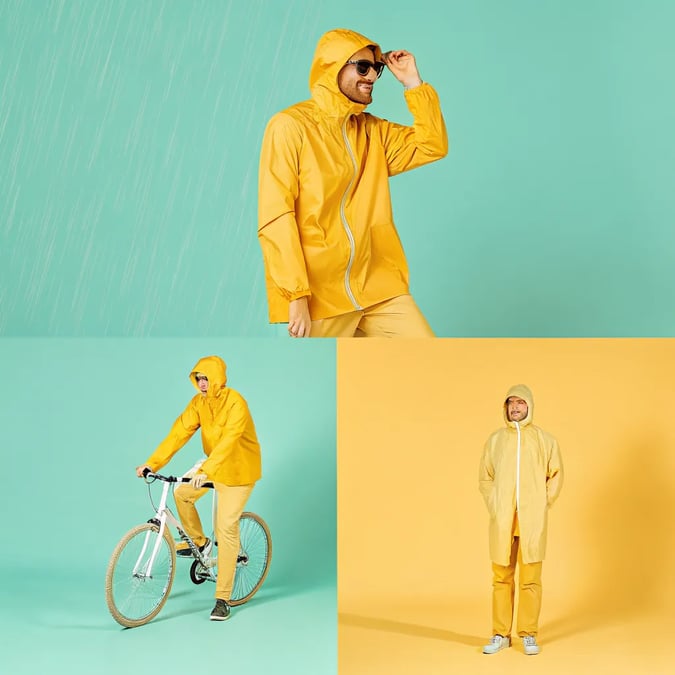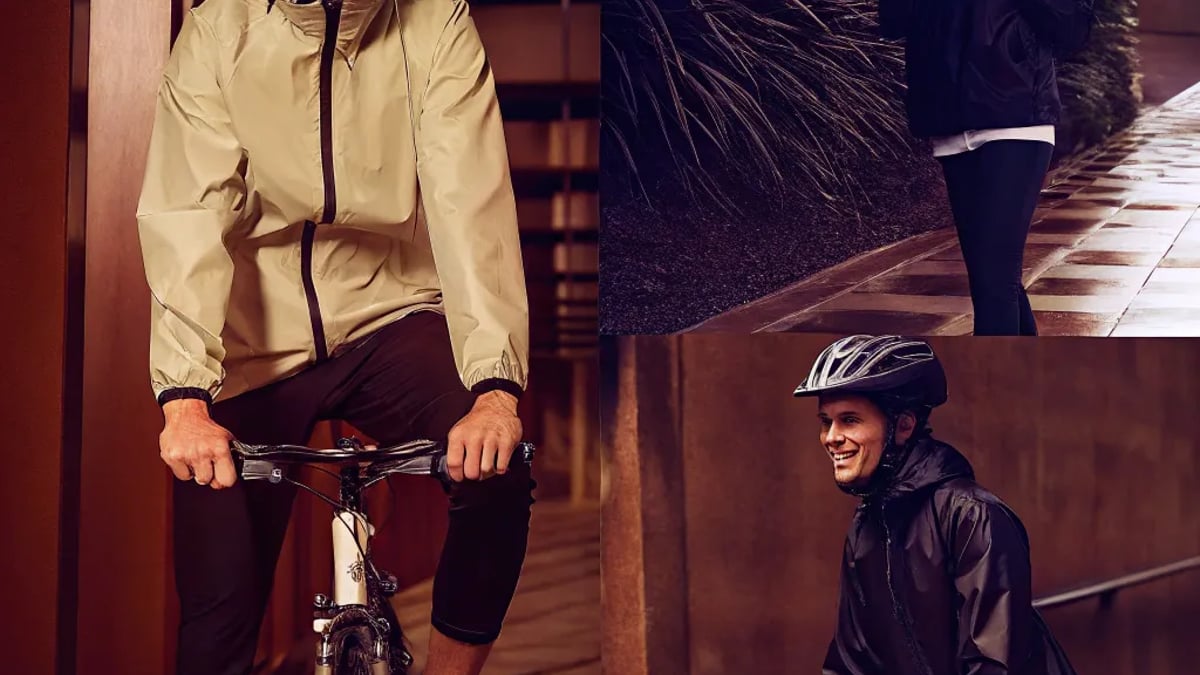
When dark clouds gather and raindrops start to fall, most cyclists face a tough choice: brave the elements or park the bike. But with the right gear, cycling in wet weather doesn't have to be a miserable experience. Modern rain gear combines functionality with style, allowing riders to stay dry while looking good on two wheels.
Why Invest in Quality Cycling Rain Gear?
Rain-specific cycling gear isn't just about staying dry—it's about comfort, safety, and extending your riding season. Unlike regular rainwear, cycling-specific options are designed with the unique body position and movement patterns of cyclists in mind.
"I used to think my hiking rain jacket was good enough for cycling," says Portland-based commuter Jamie Chen. "Then I tried a cycling-specific jacket and realized I'd been soaking in my own personal sauna for years."
Quality rain gear offers several advantages:

- Breathability: Prevents overheating and that clammy feeling
- Visibility: Many options include reflective elements for safety
- Cycling-specific cut: Longer in back, articulated sleeves for riding position
- Durability: Withstands regular movement and abrasion better than general rainwear
Essential Rain Gear for Year-Round Cyclists
Jackets: Your First Line of Defense
The rain jacket forms the cornerstone of any wet-weather cycling wardrobe. The Rapha Core Rain Jacket has earned praise for its relaxed fit that accommodates warm layers underneath while providing excellent protection from rain. It strikes that difficult balance between waterproofing and breathability that makes all the difference on a wet ride.
When shopping for a cycling rain jacket, look for:
- Taped seams
- Waterproof zippers
- Adjustable hood (preferably helmet-compatible)
- Venting options
- Reflective details
Some jackets, like the Showers Pass Transit, include thoughtful features like a drop-down tail to protect your backside from spray and reinforced shoulders that won't wear out under backpack straps.
Beyond the Jacket: Complete Rain Protection
While a good jacket is essential, truly foul weather demands more comprehensive protection:
Rain pants or shorts: These can be game-changers for commuters who need to arrive with dry clothes. Look for options with articulated knees and reflective elements.
Waterproof shoe covers: Nothing ruins a ride faster than soaked feet. Neoprene shoe covers provide insulation along with water resistance.
Gloves: Waterproof cycling gloves keep your hands functional and comfortable. Some riders prefer neoprene for its warmth even when wet.
Caps and helmet covers: A cycling cap with a brim under your helmet helps keep rain out of your eyes, while a helmet cover keeps your head dry.
How Do I Choose Between Poncho and Traditional Rain Gear?
Cycling ponchos have gained popularity among urban commuters for their simplicity and coverage. Unlike traditional rain jackets, ponchos create a tent-like coverage that can protect not just you but parts of your bike and even a small bag.
However, they're not ideal for all situations. A Reddit user from Vancouver notes: "Ponchos are great for flat urban commuting but become a liability in windy conditions or on fast descents where they can catch air like a sail."
Traditional rain gear offers better aerodynamics and typically more durability for serious riders, while ponchos excel in convenience and coverage for shorter, casual rides.
Layering Strategies for Wet and Cold Conditions
Effective rain protection isn't just about the outer layer—it's about a complete system. REI's expert advice on cold-weather dressing emphasizes the importance of proper layering:
- Base layer: Moisture-wicking fabrics keep sweat away from your skin
- Mid layer: Insulation that works even when damp (wool or synthetic)
- Outer layer: Your waterproof/windproof protection
The combination allows you to regulate temperature while staying dry. On milder rainy days, you might skip the mid layer, while cold downpours might require all three.
Maintenance Tips to Extend the Life of Your Rain Gear
Quality rain gear represents a significant investment, but proper care can extend its lifespan considerably:
- Wash according to manufacturer instructions (usually gentle cycle with technical wash)
- Reapply DWR (Durable Water Repellent) coating when water stops beading
- Hang dry rather than using high heat
- Store clean and completely dry to prevent mildew
Finding Your Personal Rain Gear Style
Today's cycling rain gear comes in a variety of styles from the purely functional to fashion-forward. Brands like Chrome Industries and Rapha offer sleek designs that look good both on and off the bike.
For the style-conscious cyclist, look for pieces that:
- Come in colors beyond basic black
- Feature clean lines and minimal branding
- Transition well to off-bike activities
- Include subtle reflective elements that don't dominate the aesthetic
Disclaimer: This content is for informational purposes only and not a substitute for professional advice. Always test gear in mild conditions before relying on it in challenging weather.
Tags

About Rafael Mendoza the Author
Rafael Mendoza, an avid cyclist and urban planner, has dedicated over a decade to mapping out safe and efficient cycling routes in bustling city environments. His extensive research and hands-on experience make him a leading expert in transforming urban landscapes into cyclist-friendly spaces.
Recommended Articles
The Eye and Ear Checks That Catch What You Can’t See
Regular eye and ear checks are vital for health, uncovering hidden conditions to ensure proactive care and overall well-being.
Clothing That’s Both Comfortable and Easy to Wear
This guide emphasizes the significance of selecting comfortable and easy-to-wear clothing, highlighting adaptive clothing options for seniors and newborns, and recommends breathable, non-irritating fabrics like cotton and bamboo. It also provides practical tips for choosing attire suitable for medical appointments to accommodate various health and mobility needs.
Market Analysis of Shoes Company: Trends for 2025
By 2025, the footwear market is expected to grow significantly, with particular opportunities in the senior safety footwear segment due to increasing demand for products that prioritize both safety and style. Companies that integrate advanced technologies, such as smart health-monitoring features, and prioritize design elements inspired by insights from related industries, can tap into this expanding market and leverage cross-category consumer preferences for multifunctional and aesthetically pleasing products.
Church Clothes for Women: Classic, Modest & Elegant
Church attire for women should balance style and modesty, with options like midi and maxi dresses, A-line silhouettes, and layered ensembles to suit personal faith journeys and seasonal changes, while evolving standards may guide these choices; most denominations accept business casual as appropriate for newcomers.
Church Fashion 2025: Styles for the Modern Woman
As we approach 2025, church fashion for women is evolving to blend traditional modesty with contemporary style, emphasizing versatility and personal expression through trends like layered outfits, sustainable materials, and bold color palettes, while maintaining respect for sacred spaces. Women can update their church wardrobes affordably by repurposing existing pieces, investing in versatile staples, and utilizing accessories, with modern modest outfits now seamlessly transitioning from Sunday services to everyday settings.




